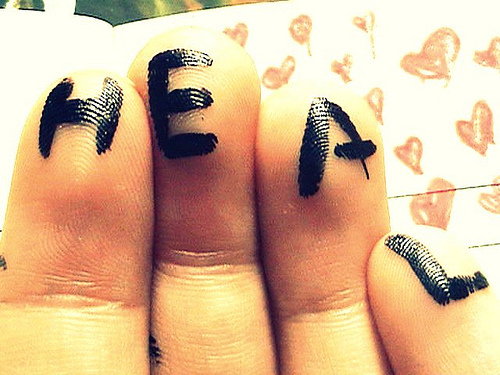NaNo Prep: Giving Your Hero a Reason to Heal

NaNo Prep season is here! Whether you’re already planning your novel, searching for inspiration, or planning not to plan your novel, we’ll be providing insights, tips, and writer fuel to help you hit the ground running in November. Today, author Alan Sitomer shares how you can give your protagonists drive—and find healing:
To have a great story you must have a great hero. And to have a great hero, you must beat the crud out of them.
Totally serious. Great heroes, over the course of great stories will have been dragged through the mud physically, emotionally, spiritually and psychologically. Maybe not in that order, but it will have happened. Each hurt should be wrenching, vivid and altering (if not downright scarring).
Indeed, to become a successful writer you must love your hero and hurt your hero. Why? Because readers love it! Why do they love it? Because the more formidable the challenge, the deeper down the hero must reach in order to achieve their goal and heal.
Over the course of a good story, the reader will come to experience a couple primary hurts:
The hero’s current hurt.
A fresh hurt.
The current hurt.
Stories begin with placing your character in a setting. But this is not just a physical place; it’s also an emotional place for the character as well. Then something goes wrong. Their life either already has a problem or their life is about to undergo some sort of “trigger” incident that will open a fresh wound.
People like to get comfortable in their lives and many, many folks live by the creed, “If it ain’t broke, don’t fix it.”
Break something. It will force your hero to get off their butt and go fix it.
For example, in The Hunger Games, Katniss is a young girl who’s forced to illegally hunt in order to feed her fatherless, practically starving family. If Katniss doesn’t bring home food, her younger sister, the shining light of her life, doesn’t eat. Powerful, hurtful stuff for sure.
How about the classic novel Animal Farm? When the book opens, the oppression of mankind—the current hurt—creates a world of suffering for the animals, the protagonists of Orwell’s book.
But then, in each of the examples, what happens to our protagonists? That’s right, things get worse!
Worse? How? The reader says to themselves.
Makes it intriguing, huh?
A fresh hurt
All of us have a line in the sand. The theory of the fresh hurt is that you cross it. Take your protagonist to the point where despite the fact that they do not want to act, they must. The fresh hurt sends the hero reeling into an “enough is enough” moment.
For Katniss, her “enough is enough” moment is her belief that, “There’s no way you’re taking my sister to fight in these sick games. You want to mess with someone from my family? Well, now you’re gonna have to mess with me.”
In Animal Farm, the moment comes when the farmer gets so drunk he forgets to feed the animals. Next thing you know, enough is enough: rebellion.
All of us have a line in the sand. When a fresh hurt crosses the line and the hero can no longer sit idly by, that’s what will give your story its engine.
Good luck with your adventure.

Alan Sitomer is California’s 2007 Teacher of the Year and the founder of The Writer’s Success Academy. In addition to having been an inner-city high school English teacher and former professor in the Graduate School of Education at Loyola Marymount University, Mr. Sitomer is a nationally renowned speaker who specializes in engaging underperforming students. Additionally, Mr. Sitomer has authored 16 books to date.
Chris Baty's Blog
- Chris Baty's profile
- 63 followers



